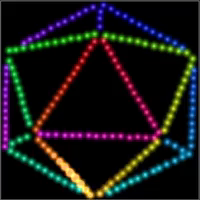Click to view
[
[190,830],
[225,833],
[262,833],
[303,836],
[338,836],
[376,838],
[415,838],
[453,839],
[490,840],
[529,841],
[567,842],
[607,847],
[645,845],
[684,847],
[722,850],
[744,820],
[723,784],
[707,752],
[687,718],
[671,685],
[649,651],
[631,616],
[613,582],
[594,549],
[576,516],
[557,483],
[540,449],
[522,413],
[504,382],
[486,347],
[446,349],
[425,383],
[403,417],
[386,452],
[365,484],
[345,516],
[325,548],
[306,581],
[287,613],
[267,644],
[246,678],
[226,709],
[206,742],
[187,773],
[167,806],
[178,858],
[204,886],
[228,915],
[253,942],
[279,971],
[305,1000],
[329,1029],
[353,1057],
[379,1087],
[402,1117],
[425,1145],
[469,1139],
[497,1112],
[522,1085],
[552,1057],
[576,1032],
[604,1006],
[630,980],
[657,953],
[684,926],
[713,898],
[739,873],
[773,809],
[787,771],
[800,736],
[813,699],
[827,663],
[840,625],
[853,589],
[866,552],
[879,513],
[893,477],
[906,438],
[876,409],
[838,401],
[799,389],
[762,381],
[724,374],
[681,363],
[646,352],
[610,344],
[570,336],
[530,327],
[497,319],
[446,313],
[409,321],
[371,331],
[333,337],
[296,346],
[259,354],
[220,361],
[185,371],
[150,377],
[110,386],
[76,392],
[43,398],
[43,450],
[56,485],
[66,519],
[77,557],
[87,595],
[98,630],
[106,666],
[116,705],
[128,740],
[137,776],
[126,845],
[93,861],
[58,880],
[51,918],
[83,938],
[114,957],
[147,977],
[180,998],
[211,1017],
[242,1040],
[274,1059],
[306,1080],
[339,1100],
[370,1119],
[514,1132],
[548,1113],
[581,1096],
[617,1077],
[648,1062],
[683,1042],
[719,1023],
[749,1006],
[784,987],
[820,969],
[855,950],
[889,932],
[855,912],
[822,891],
[787,870],
[897,889],
[898,850],
[902,813],
[901,775],
[903,734],
[904,698],
[905,657],
[906,618],
[907,582],
[910,540],
[912,500],
[855,381],
[820,359],
[785,341],
[753,320],
[718,301],
[686,282],
[653,263],
[619,242],
[586,221],
[552,203],
[521,183],
[486,162],
[472,195],
[469,233],
[467,272],
[439,172],
[403,190],
[372,209],
[339,227],
[306,246],
[273,264],
[238,283],
[204,303],
[174,322],
[139,340],
[112,358],
[29,484],
[29,521],
[29,559],
[27,597],
[27,634],
[26,672],
[26,710],
[25,749],
[26,786],
[26,820],
[24,857],
[22,895]
]




 I’d tried to load that one earlier and I couldn’t get it to load, but seems to work fine now.
I’d tried to load that one earlier and I couldn’t get it to load, but seems to work fine now. 
